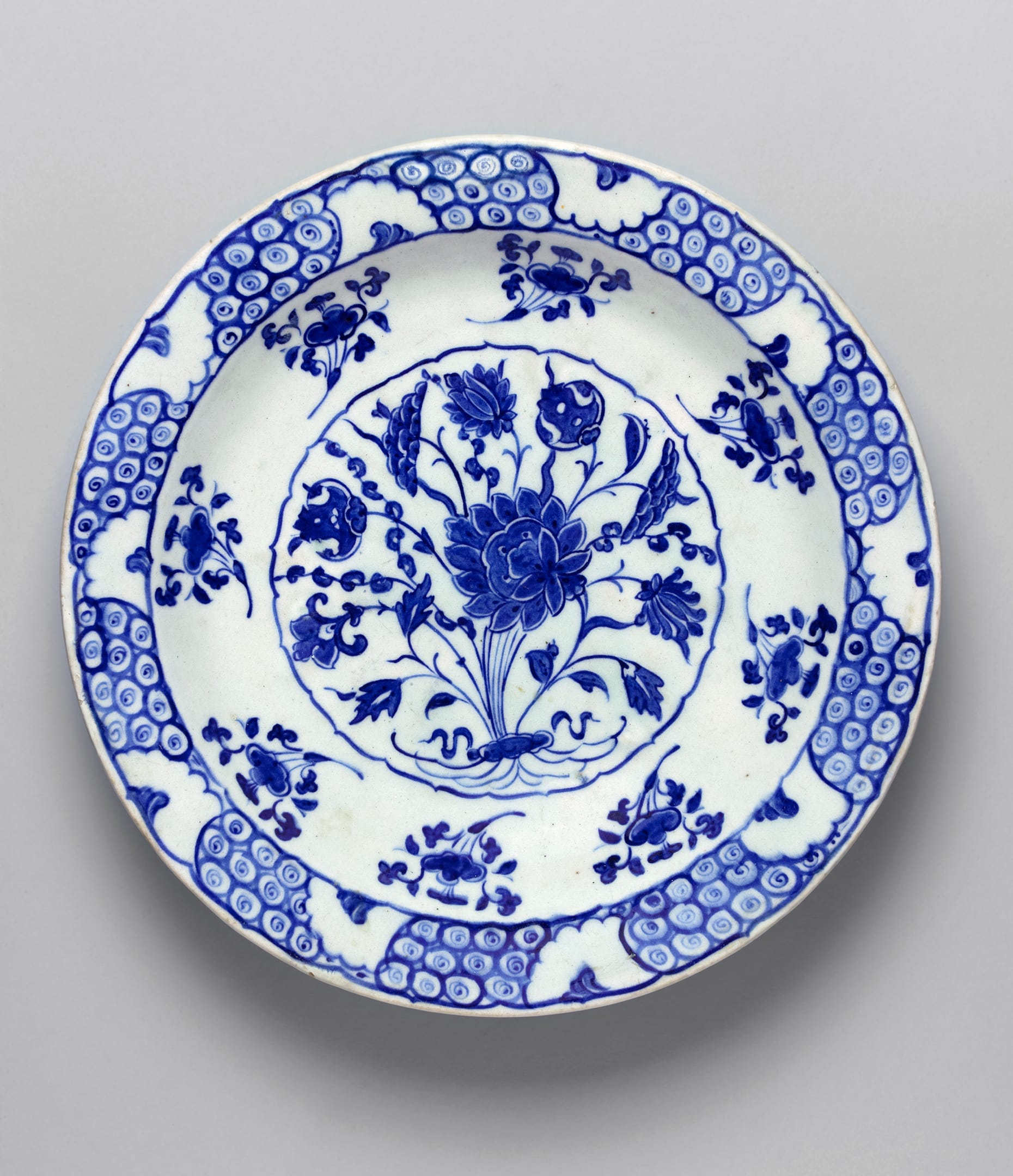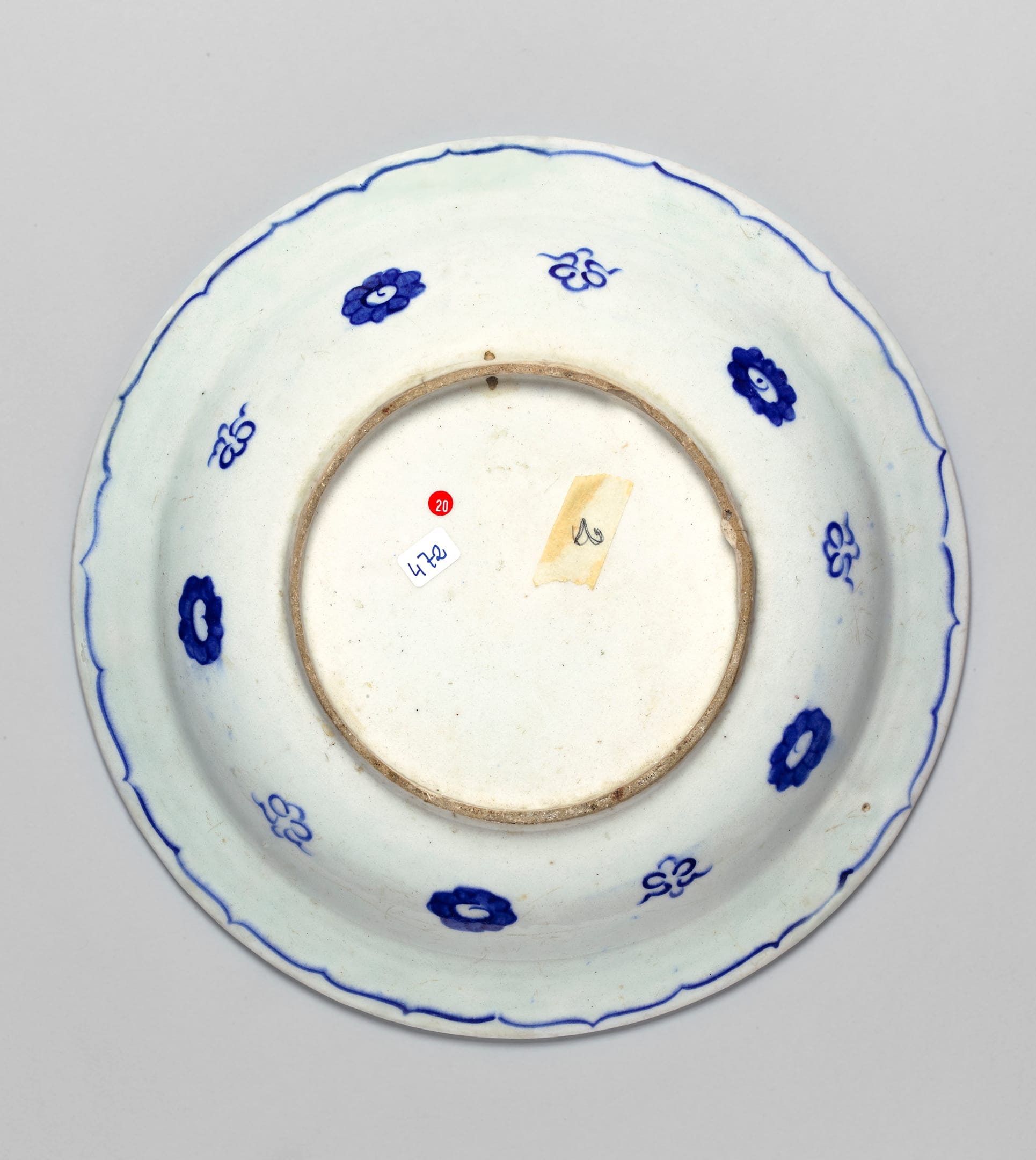This wide blue-and-white plate (“tabaq”) illustrates Iznik potters fascination with Chinese ceramics when imports of porcelain from China began to increase in the second quarter of the 14th century. Plates, cups and pitchers for the sultan’s table, imported in large quantities or received as diplomatic gifts, became models whose forms, colour harmonies and patterns – as, here, the lotus – were more or less freely reinterpreted. With its slightly curved rim adorned with stylised waves and its central motif comprising a bouquet of lotus flowers and leaves tied by a ribbon, this item is an accurate copy of a Chinese prototype from the Jingdezhen kilns and can be attributed to the reign of the emperor Xuande (1426–35) at the beginning of the Ming period (1368–1644). Several examples of such work can be found in the Topkapi Museum in Istanbul.


